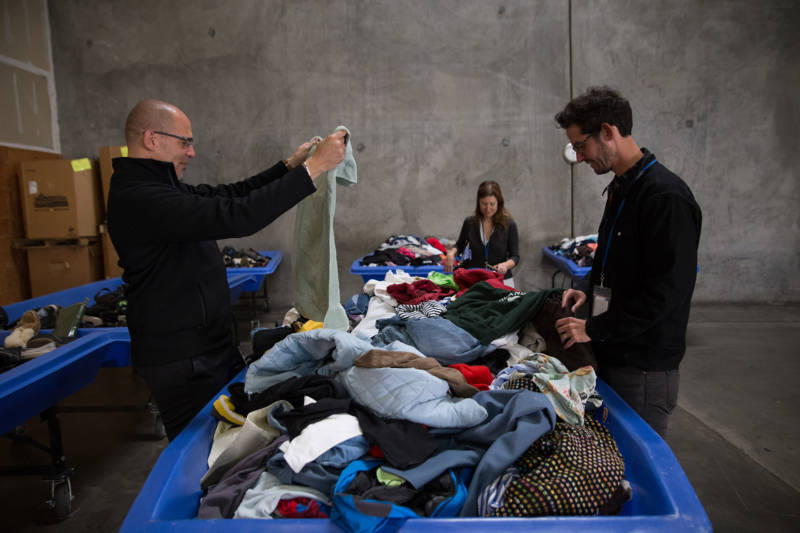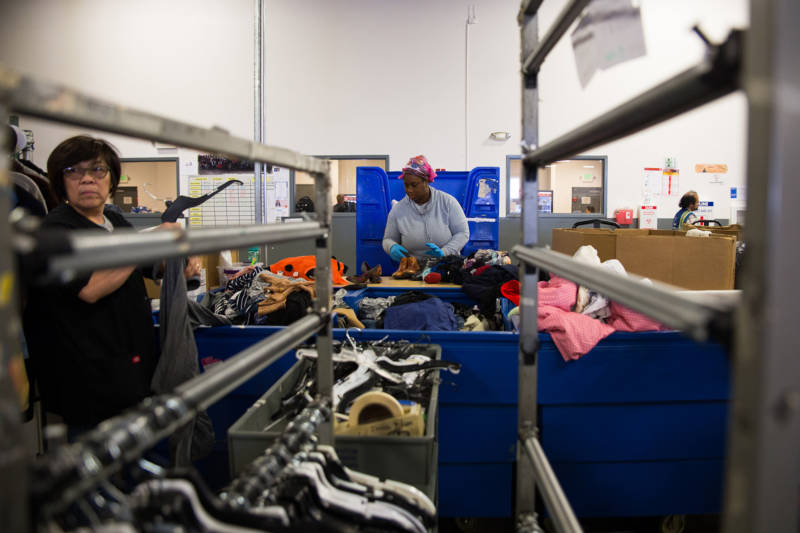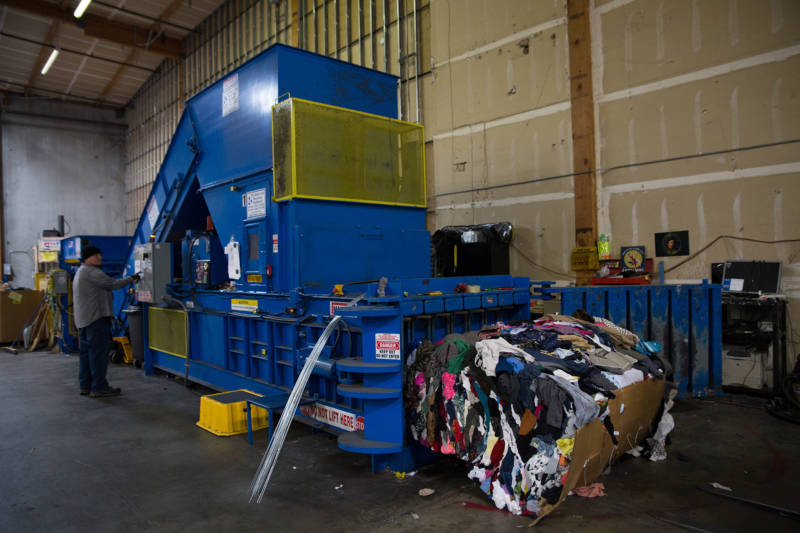P
andemic clean-out, Marie Kondo-ing, spring cleaning … whatever you want to call it — there is a massive purge of clothing coming out of people’s closets right now. Thrift stores across the country have reported unprecedented surges in their clothing donations in recent years — the first boom coincided with the release of the popular Netflix show, “Tidying Up with Marie Kondo,” and another wave came during the coronavirus pandemic.
But what happens to all those old throwaways?
This is what Bay Curious listener Ellen wants to know. Her question: What can you do with used clothing? And what if it’s not suitable for donation sites? Can you recycle the material?
Ellen’s question won a Bay Curious voting round by the largest margin we’ve ever seen. And for good reason. In North America, 10.5 million tons of clothes go to landfills every year.
First, Try to Keep Clothes as Clothes
To find out what is being done about this in the Bay Area, I started with my own closet. I’m moving from the Bay Area and I asked a friend of mine, Mairin Wilson, to help me sort my stuff. She’s an expert on sustainable clothing and says the first step in the recycling process is to try to keep the clothes as clothes.
“The longer the clothing can just be worn as clothing, the more sustainable it is,” she says.
She suggested we try to resell as much of my clothing as possible. We separated it into piles, ranked from high to low quality, to sell on online platforms like Poshmark, thredUP and Instagram.
Wilson says this is an exciting moment in the fashion world because consumers are starting to get value back from their clothes.
“It makes you want to buy that higher-quality sweater,” she says. “Clothing no longer becomes this one-time purchase. It becomes an investment. And it’s not just buying high-quality clothing for yourself. It’s for the future of the garment.”
Donating clothing to a thrift shop or Goodwill is a solid option, too —we’ll get more into how that works below.
But then, there was the clothing that I couldn’t resell or donate, the pile of my old socks, undies, and clothes with rips and stains. The stuff usually destined for the trash can.
The best option for these worn-out items is to be turned back into fabric, if possible. There are just a handful of facilities worldwide that do this.
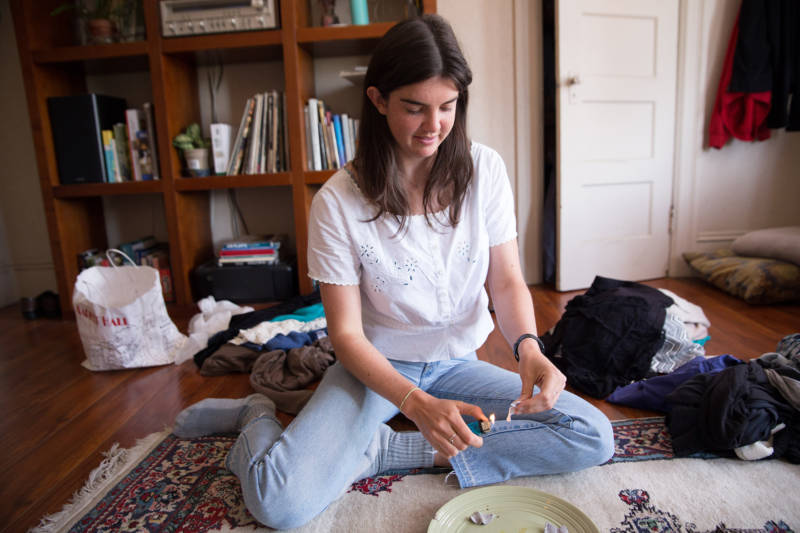
One of the first challenges that textile recyclers face when they receive used clothing is determining what type of fibers an item is made from. Wilson demonstrated how companies will burn pieces of clothing to learn if they’re cotton, polyester, wool or some type of blend.
“Every fabric is going to burn a little bit differently, and the smell of the smoke will be a little different,” says Wilson. “With polyester, it’s like if you were to burn plastic. At first it curls away. But then 100 percent cotton will immediately ignite.”
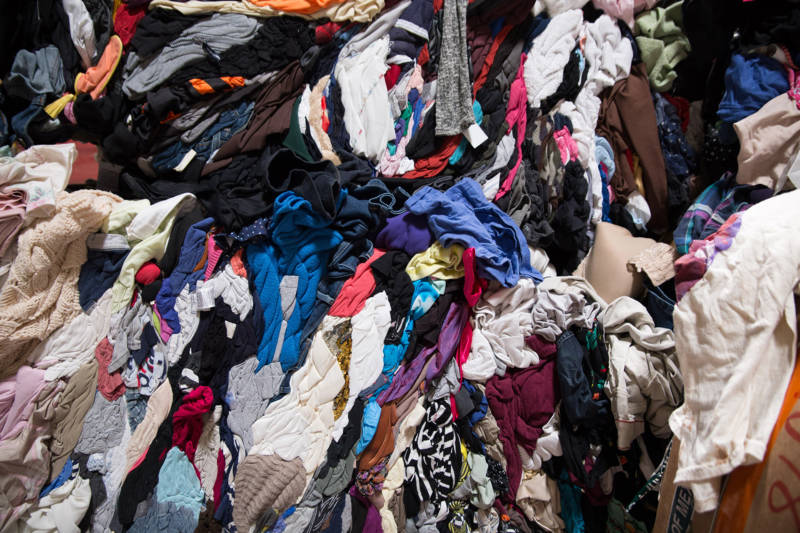
If You Can’t Resell or Donate … Recycle
One clothing company based in L.A. is working with textile recycling facilities in South Carolina and Spain to turn used clothes back into new clothes. It’s called For Days and it has a unique membership model.
“We offer a join-and-swap model,” says co-founder Kristy Caylor. “Basically, you select your tees, tanks or sweats, and then you can change the old ones out for new ones anytime, for any reason.”
For Days takes those used clothes and turns them back into new ones using a mechanical recycling process. (And if you send in a bag of used clothes to be recycled, they will give you a discount. That’s what I did.)
“We chop up the old clothing, it gets blended together, some virgin fiber is added to it, it’s made into yarn and then it’s remade into clothes or other stuff, depending on the yarn,” says Caylor. “So that’s why we know how to recycle clothes, because we do it as part of our business.”
